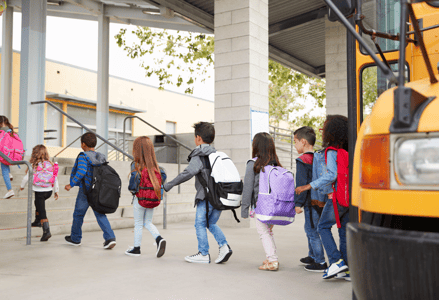
Our previous “Real World Examples” post focused on Behavior Management. Keeping with the Classroom Organization domain, Productivity is our next dimension of exploration.
Productivity is about how educators manage time to consistently provide children with learning opportunities. Through the CLASS® lens, highly productive educators create a well-organized environment where activities, routines, and transitions are carefully structured and run like clockwork. This ensures children are consistently provided with opportunities to participate and understand what to do, minimizing periods when they are left waiting without purpose.
Planning and managing a structured environment is key to maximizing learning time. It's important to note that Productivity measures the consistency of learning opportunities, not the quality of learning itself, which is captured in the Instructional Support domain.
Opportunities for Learning (Maximizing Learning Time)
The Example: A learning experience that proved to be a valuable use of your time
Many of us can recall a learning experience where every minute of our time felt productive and well-spent. Whether in a classroom or on a playing field, activities were carefully planned and ready for us to dive into, with options for what to do next as we finished. There was little time spent waiting for instructions or materials, and we never experienced the frustration of a painfully slow activity. In fact, it’s hard to imagine how we could have made better use of our time during that learning opportunity.
Routines
The Example: Getting ready for work
Everyone has a morning routine, like brewing coffee before heading to work, that helps start the day off right. Routines are essential because they make tasks automatic, reducing stress and freeing up mental energy for more important thoughts. This eliminates wasted time and confusion, as you know exactly what to do and in what order. For instance, while making coffee, your mind can focus on planning how you'll introduce today's math lesson because you already know the steps of brewing your coffee.
The same applies to children in the learning setting as they engage in established routines. For example, as they follow their well-known routine for selecting learning areas, they are able to plan and think about what they want to create rather than stress about not knowing what to do or how to handle the problem of an area already being full.
Though it takes time to learn and establish routines, both for ourselves and our children, the effort pays off by creating a smooth, predictable day that everyone can successfully navigate.
Transitions
The Example: Transition from work to home
Our lives are busy, and balancing work and home life can be challenging. Think about your commute home. It’s not just about getting from work to home but also mentally preparing for the next part of your day. How do you make this transition smoother? You might set an alarm to give yourself time checks before leaving so it doesn’t feel rushed. Listening to music or a podcast on the way home can help you unwind and reduce stress, preparing you for the evening ahead and shifting your thoughts to something new.
These habits help ease the transition from work to home and set a positive tone. Similarly, children need support when transitioning between activities, which they do countless times daily. Effective transitions help them shift focus, reset emotions, and prepare for what's next. Rather than abrupt interruptions, transitions have the power to make our days more predictable and meaningful, helping us move smoothly from one experience to another.
Preparation
The Example: Party Planning
We all can agree that preparing for a party can be a big task, requiring thoughtful planning and preparation to ensure everything runs smoothly. If our party will include games or activities, we know it's essential that we understand the rules in advance so we can explain them clearly. We also know that we need to have all the materials organized and ready so we’re not scrambling to gather items after guests have arrived.
By preparing for and setting everything up ahead of time, we can ensure that our guests can easily move through the activities and that our party is a success! It’s exciting to know we can apply this same approach to our daily lesson plans. Knowing what we will teach and having materials ready will help our children navigate their learning experiences smoothly and successfully.
What are some of your favorite real-world examples of Productivity? What adult experiences can you think of that reflect Productivity in our daily lives? What have you learned from your experiences that can be applied to how you support children in the learning setting?

